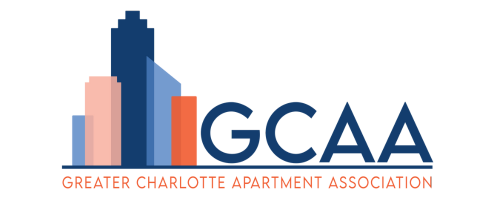Record-Breaking Development, Resilient Demand: Charlotte’s Multifamily Outlook
Did You Know?
Charlotte delivered over 4,700 new apartment units in just the first quarter of 2025—more than triple the city’s historic average. That pace is expected to continue, with over 10,700 units projected to be added by the end of the year.
Despite this surge in supply, the market remains surprisingly resilient. Vacancy rates have actually declined for three consecutive quarters, and most new units are leasing quickly. Continued job growth, population inflow, and challenges to homeownership (like high mortgage rates) are keeping demand for rentals strong.
Charlotte was even ranked the #2 U-Haul Growth City in 2024, highlighting the region’s continued in-migration.
Article 1: Charlotte’s Multifamily Market Navigates a Record-Breaking Year of Growth
The Charlotte metro area is in the midst of an unprecedented building boom. Recent reports show that over 4,700 apartment units were delivered in Q1 2025—more than three times the historical average. By year-end, more than 10,700 new units are expected.
So, why aren’t we seeing a spike in vacancies?
Despite the rapid delivery pace, vacancy rates have declined, not risen. The market is absorbing these units at a healthy clip due to:
- Robust job growth and a diversifying economy
- Continued population inflow—Charlotte ranked #2 on U-Haul’s 2024 Growth Cities list
- Barriers to homeownership, including elevated interest rates and limited housing inventory
This strong demand has fueled record net absorption—meaning newly built units are being rented as fast as they’re completed.
Submarkets to Watch:
Some areas are seeing faster inventory growth than others:
- Huntersville and Cornelius are each expected to grow rental stock by 20%+ this year
- These areas may see short-term increases in vacancy or concessions
- Long-term, this growth reflects critical investments in housing supply
Article 2: Middle Matters – Why Mid-Tier Apartments Are Anchoring Charlotte’s Rental Market
While luxury towers and affordable housing get much of the spotlight, it’s Charlotte’s mid-tier apartment communities that are proving to be the backbone of the rental market.
What is “mid-tier” housing?
These are units generally affordable to households earning 60%–100% of Area Median Income—your essential workers, young families, and retirees who don’t qualify for subsidies but can’t afford Class A rent.
Key data trends:
- Mid-tier properties saw the sharpest decline in vacancy rates
- Rents remained more stable than in high-end or entry-level segments
- These properties offer the best balance of affordability and amenities
Why it matters:
This “missing middle” segment is where most renters live—but it’s also the hardest to build. Rising land and construction costs, coupled with rigid zoning rules, often make it financially unfeasible for developers to target this price point without local support.
Local policy opportunities:
To protect and grow mid-tier housing, municipalities can:
- Provide zoning relief for moderate-income projects
- Encourage adaptive reuse of aging properties into refreshed, mid-tier communities
- Preserve existing stock from displacement due to luxury redevelopment
Bottom Line: Mid-tier apartments aren’t just holding steady—they’re outperforming other segments. Local leaders should prioritize them as a cornerstone of housing affordability and market stability.
Sources and Data References
The information in this newsletter was compiled using data and insights from the following sources:
- Institutional Property Advisors (IPA) – Charlotte Multifamily Market Report, Q2 2025
https://www.institutionalpropertyadvisors.com - Northmarq – Multifamily Absorption Surges in Charlotte to Start 2025, June 2025
https://www.northmarq.com/insights/insights/multifamily-absorption-surges-charlotte-start-2025 - MMG Real Estate Advisors – Charlotte Q1 2025 Market Report
https://mmgrea.com/charlotte-q1-2025-market-report - Axios Charlotte / CoStar – Average Charlotte Apartment Rents Drop by $1, April 21, 2025
https://www.axios.com/local/charlotte/2025/04/21/apartment-rents-growth-construction-supply-demand - U-Haul – Top Growth Cities of 2024
https://www.uhaul.com/Articles/About/Top-Growth-Cities-Of-2024-By-U-Haul-31763
